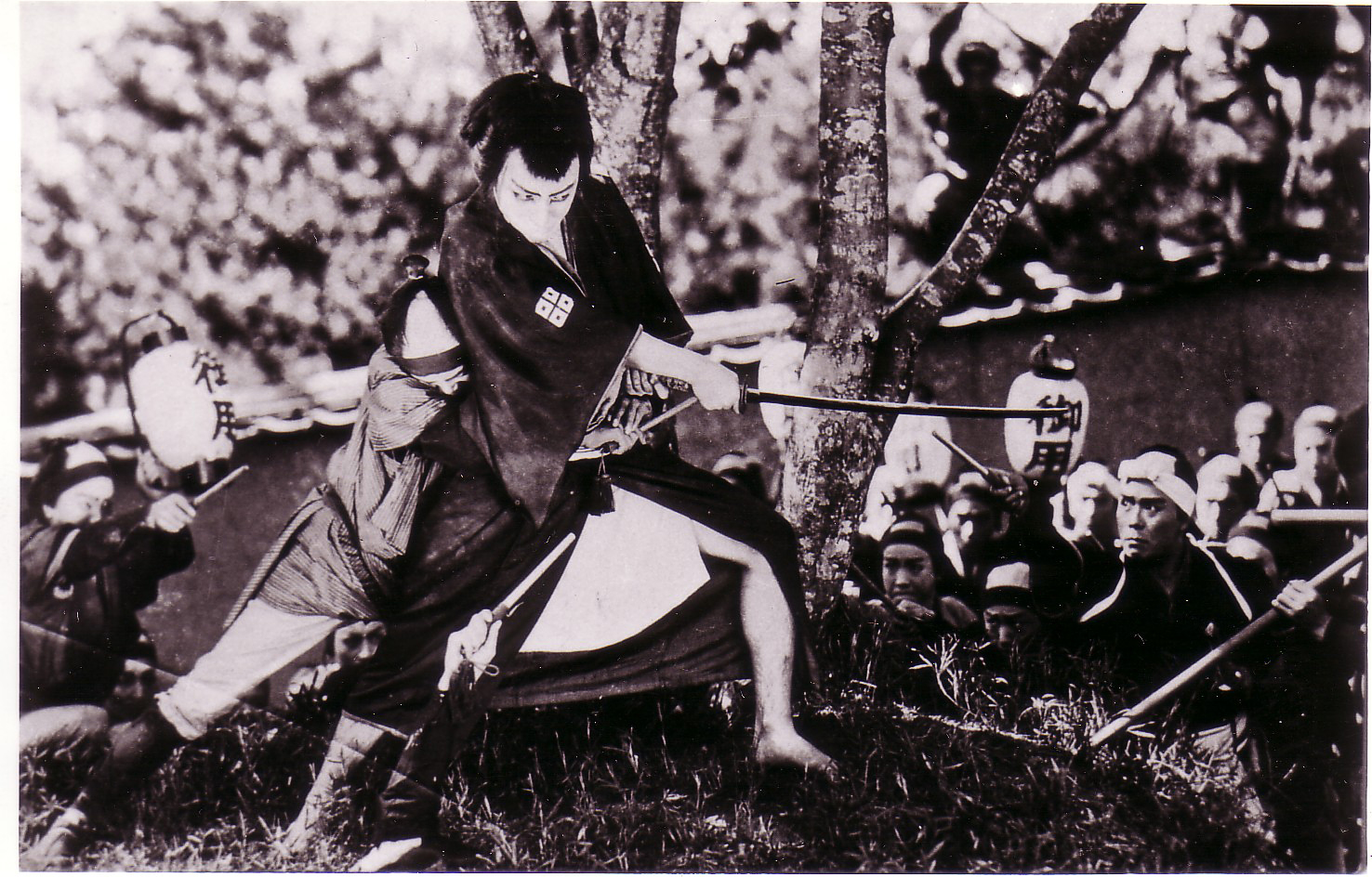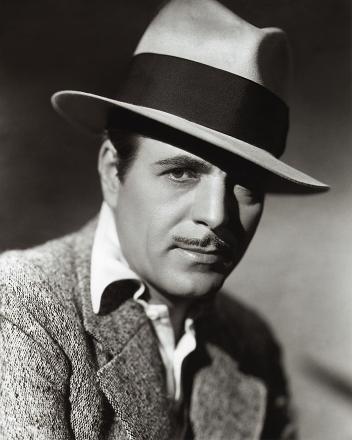|
Tetsu No Tsume
(also known as ''Claws of Steel'' or ''Claws of Iron'') is a 1951 black-and-white Japanese horror film (J-Horror) directed by Nobuo Adachi for Daiei Films. It was shot in Black and White, Academy ratio full-screen, and was never dubbed in English.Galbraith,Stuart (1994). ''Japanese Fantasy, Science Fiction and Horror Films''. McFarland and Co., Inc. The film was never shown in the United States, and was only available on laserdisc in Japan. Synopsis A meek church worker who was once bitten by an ape on a jungle island in World War II World War II or the Second World War (1 September 1939 – 2 September 1945) was a World war, global conflict between two coalitions: the Allies of World War II, Allies and the Axis powers. World War II by country, Nearly all of the wo ... begins to transform into a beast-man whenever he drinks alcohol. He develops a split personality like Jekyll & Hyde, one half adoring a virginal church organist, the other lusting after an immoral ... [...More Info...] [...Related Items...] OR: [Wikipedia] [Google] [Baidu] |
Daiei Motion Picture Company
Daiei Film Co. Ltd. (Kyūjitai: Shinjitai: ''Daiei Eiga Kabushiki Kaisha'') was a Japanese film studio. Founded in 1942 as Dai Nippon Film Co., Ltd., it was one of the major studios during the postwar Golden Age of Japanese cinema, producing not only artistic masterpieces, such as Akira Kurosawa's ''Rashomon'' (1950) and Kenji Mizoguchi's ''Ugetsu'' (1953), but also launching several film series, such as ''Gamera'', ''Zatoichi'' and ''Yokai Monsters'', and making the three ''Daimajin'' films (1966). It declared bankruptcy in 1971 and was acquired by Kadokawa Pictures. History Daiei Film was the product of government efforts to reorganize the film industry during World War II in order to rationalize use of resources and increase control over the medium. Against a government plan to combine all the film studios into two companies, Masaichi Nagata, an executive at Shinkō Kinema, pressed hard for an alternative plan to create three studios. His efforts won out and Shinkō Kinema ... [...More Info...] [...Related Items...] OR: [Wikipedia] [Google] [Baidu] |
Japan
Japan is an island country in East Asia. Located in the Pacific Ocean off the northeast coast of the Asia, Asian mainland, it is bordered on the west by the Sea of Japan and extends from the Sea of Okhotsk in the north to the East China Sea in the south. The Japanese archipelago consists of four major islands—Hokkaido, Honshu, Shikoku, and Kyushu—and List of islands of Japan, thousands of smaller islands, covering . Japan has a population of over 123 million as of 2025, making it the List of countries and dependencies by population, eleventh-most populous country. The capital of Japan and List of cities in Japan, its largest city is Tokyo; the Greater Tokyo Area is the List of largest cities, largest metropolitan area in the world, with more than 37 million inhabitants as of 2024. Japan is divided into 47 Prefectures of Japan, administrative prefectures and List of regions of Japan, eight traditional regions. About three-quarters of Geography of Japan, the countr ... [...More Info...] [...Related Items...] OR: [Wikipedia] [Google] [Baidu] |
Cinema Of Japan
The , also known domestically as , has a history that spans more than 100 years. Japan has one of the oldest and largest film industries in the world; as of 2022, it was the Film industry#Statistics, fourth largest by number of feature films produced, producing 634 films, and third largest in terms of box office revenue, standing at $1.5 billion. Films have been produced in Japan since 1897. During the 1950s, a period dubbed the "Golden Age of Japanese cinema", the ''jidaigeki'' films of Akira Kurosawa as well as the science fiction films of Ishirō Honda and Eiji Tsuburaya gained Japanese cinema international praise and made these directors universally renown and highly influential. Some of the Japanese films of this period are now rated some of the List of films considered the best, greatest of all time: ''Tokyo Story'' (1953) ranked number three in ''Sight & Sound'' critics' list of the 100 greatest films of all time and also topped the 2012 ''Sight & Sound'' directors' poll ... [...More Info...] [...Related Items...] OR: [Wikipedia] [Google] [Baidu] |
Horror Film
Horror is a film genre that seeks to elicit physical or psychological fear in its viewers. Horror films often explore dark subject matter and may deal with Transgressive art, transgressive topics or themes. Broad elements of the genre include Monster movie, monsters, Apocalyptic and post-apocalyptic fiction, apocalyptic events, and Religion, religious or Folk horror, folk beliefs. Horror films have existed History of horror films, since the early 20th century. Early Inspirations predating film include folklore; the religious beliefs and superstitions of different cultures; and the Gothic fiction, Gothic and Horror fiction, horror literature of authors such as Edgar Allan Poe, Bram Stoker, and Mary Shelley. From its origins in silent films and German expressionist cinema, German Expressionism, horror became a codified genre only after the release of Dracula (1931 English-language film), ''Dracula'' (1931). Many sub-genres emerged in subsequent decades, including body horror, comed ... [...More Info...] [...Related Items...] OR: [Wikipedia] [Google] [Baidu] |
J-Horror
Japanese horror, also known as J-horror, is horror fiction derived from popular culture in Japan, generally noted for its unique thematic and conventional treatment of the horror genre differing from the traditional Western representation of horror. Japanese horror tends to focus on psychological horror, tension building (suspense), and the supernatural, particularly involving ghosts (''yūrei'') and Poltergeist, poltergeists. Other Japanese horror fiction contains themes of folk religion such as possession, exorcism, shamanism, precognition, and ''yōkai''. Media in which the genre of Japanese horror fiction can be found include artwork, theater, literature, film, anime and video games. Origins The origins of Japanese horror can be traced back to the horror fiction and ghost stories of the Edo period and the Meiji (era), Meiji period, which were known as ''kaidan'' (sometimes transliterated ''kwaidan''; literally meaning "strange story"). Elements of these popular folktales hav ... [...More Info...] [...Related Items...] OR: [Wikipedia] [Google] [Baidu] |
World War II
World War II or the Second World War (1 September 1939 – 2 September 1945) was a World war, global conflict between two coalitions: the Allies of World War II, Allies and the Axis powers. World War II by country, Nearly all of the world's countries participated, with many nations mobilising all resources in pursuit of total war. Tanks in World War II, Tanks and Air warfare of World War II, aircraft played major roles, enabling the strategic bombing of cities and delivery of the Atomic bombings of Hiroshima and Nagasaki, first and only nuclear weapons ever used in war. World War II is the List of wars by death toll, deadliest conflict in history, causing World War II casualties, the death of 70 to 85 million people, more than half of whom were civilians. Millions died in genocides, including the Holocaust, and by massacres, starvation, and disease. After the Allied victory, Allied-occupied Germany, Germany, Allied-occupied Austria, Austria, Occupation of Japan, Japan, a ... [...More Info...] [...Related Items...] OR: [Wikipedia] [Google] [Baidu] |
Tatsuo Saitō
was a Japanese film actor and director. He appeared in more than two hundred films between 1925 and 1967. Career Saitō joined Nikkatsu studios, where he made his film debut in 1925, before moving to Shochiku two years later. He appeared in many films of Yasujirō Ozu between 1929 and 1950, and repeatedly worked for directors like Heinosuke Gosho and Hiroshi Shimizu. After the Second World War World War II or the Second World War (1 September 1939 – 2 September 1945) was a World war, global conflict between two coalitions: the Allies of World War II, Allies and the Axis powers. World War II by country, Nearly all of the wo ..., he also directed a number of films and appeared in many television films and series. Selected filmography References External links * * 1902 births 1968 deaths Male actors from Tokyo Japanese male film actors Japanese male silent film actors 20th-century Japanese male actors Japanese film directors Japanese male televisi ... [...More Info...] [...Related Items...] OR: [Wikipedia] [Google] [Baidu] |
Japanese Horror Films
Japanese may refer to: * Something from or related to Japan, an island country in East Asia * Japanese language, spoken mainly in Japan * Japanese people, the ethnic group that identifies with Japan through ancestry or culture ** Japanese diaspora, Japanese emigrants and their descendants around the world * Japanese citizens, nationals of Japan under Japanese nationality law ** Foreign-born Japanese, naturalized citizens of Japan * Japanese writing system, consisting of kanji and kana * Japanese cuisine, the food and food culture of Japan See also * List of Japanese people * * Japonica (other) * Japanese studies , sometimes known as Japanology in Europe, is a sub-field of area studies or East Asian studies involved in social sciences and humanities research on Japan. It incorporates fields such as the study of Japanese language, history, culture, litera ... {{disambiguation Language and nationality disambiguation pages ... [...More Info...] [...Related Items...] OR: [Wikipedia] [Google] [Baidu] |
1951 Films
The following events in film occurred in the year 1951. Top-grossing films United States The top ten 1951 released films by box office gross in the United States are as follows: International The highest-grossing 1951 films in countries outside of North America. Worldwide gross The following table lists known worldwide gross figures for several high-grossing films that originally released in 1951. Note that this list is incomplete and is therefore not representative of the highest-grossing films worldwide in 1951. This list also includes gross revenue from later re-releases. Events * February 15 – new management takes over at United Artists with Arthur B. Krim, Robert Benjamin and Matty Fox now in charge. * April – French magazine ''Cahiers du cinéma'' is first published. * July 26 – Walt Disney's ''Alice in Wonderland (1951 film), Alice in Wonderland'' premieres; while a disappointment at first and hardly released in theaters, it would later become one of the b ... [...More Info...] [...Related Items...] OR: [Wikipedia] [Google] [Baidu] |
1951 Horror Films
Events January * January 4 – Korean War: Third Battle of Seoul – Chinese and North Korean forces capture Seoul for the second time (having lost the Second Battle of Seoul in September 1950). * January 9 – The Government of the United Kingdom announces abandonment of the Tanganyika groundnut scheme for the cultivation of peanuts in the Tanganyika Territory, with the writing off of £36.5M debt. * January 11 – In the U.S., a top secret report is delivered to U.S. President Truman by his National Security Resources Board, urging Truman to expand the Korean War by launching "a global offensive against communism" with sustained bombing of Red China and diplomatic moves to establish "moral justification" for a U.S. nuclear attack on the Soviet Union. The report will not not be declassified until 1978. * January 15 – In a criminal court in West Germany, Ilse Koch, The "Witch of Buchenwald", wife of the commandant of the Buchenwald concentration camp, is sentenced to li ... [...More Info...] [...Related Items...] OR: [Wikipedia] [Google] [Baidu] |





